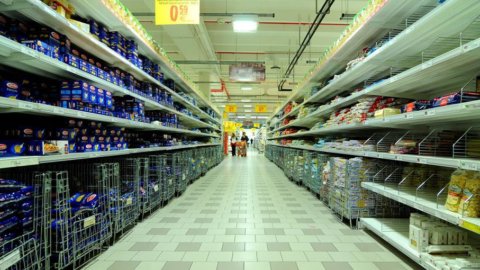As published in SACE study, Italian exports of agri-food products reached around 2013 billion euros in 33, with a large potential still to be expressed. A dynamic, that of Made in Italy, which is positive despite the unfavorable international situation. The average annual growth, between 2010 and 2013, was 6,4%, up from 4,7% in the previous three years. Italy's performance was particularly positive in non-EU emerging markets (+15,1%), evidence of the good results that can be achieved in markets with the greatest demand development potential.
Italy holds a world market share in the agri-food sector of 3,1%, in line with the Spanish one but lower than the shares of the main competitors (between 4,6% in China and 10,3% in the USA). Selecting the ten leading sectors of our agri-food exports (which represent 57% of Italian agri-food exports), however, the results are very heterogeneous according to the sectors, with peaks of excellence for pasta (37,5%), olive oil (25%) and wines (19,3%). Italy is also well positioned in "minor" sectors, such as fresh fruit (especially apples and pears), cured meats and sausages, cheeses and dairy products and the canning industry. However, with the exception of the pasta sector, where our country is the undisputed world leader, Germany holds higher market shares in the sectors of cheese and dairy products, cured meats/sausages and coffee, USA and China in the canning industry and fresh fruit, while the competition with France for wine and with Spain for oil is the history of the last decade. The current moment appears particularly propitious for a recovery of competitiveness of the Bel Paese on international markets: this requires the ability to direct the effort towards a few significant sectors, able to combine the search for all-Italian quality with economies of scale and international standards.
According to SACE, by 2018 it would be possible to increase the current Italian agri-food exports by over 7 billion euros. In Europe, where common and harmonized rules and regulations are in force, it would be possible to achieve an increase in exports of 4,8 billion, while in markets beyond the Atlantic 1,4 billion. The USA, Germany, the United Kingdom and France alone could contribute around 5 billion in additional exports. The opportunities, with due proportions, however, also concern some emerging markets whose consumers are directing their tastes more and more towards the quality of Italian productions, including China, Hong Kong, South Korea, Brazil, Poland and Egypt. A separate discussion instead applies to Russia, a destination in some cases very important for our agri-food exports, which is suffering the negative effects of the sanctions on the economy and the ban on imports of some products in the sector. In this scenario, the sectors with the greatest potential are wine, the canning industry and olive oil, which represent over 50% of the largest potential exports (3,9 billion). And it is no coincidence that these are goods that can well combine Italian quality with industrial production processes capable of coping with growing international demand.
However, the search for opportunities in the destinations highlighted up to now requires an important strategic effort. In mature markets such as USA, Germany, UK and France, agri-food companies will have to focus on strengthening competitiveness, which, in addition to the quality of the products offered, passes through the choice of suitable distribution channels, the adoption of effective marketing tools and enhancement of the brand, without forgetting the ability to offer its customers financially advantageous payment methods and extensions. In lesser-known markets, to this must be added a further effort to understand local dynamics from many points of view. Indeed, the distinctive features of Made in Italy food products represent an important added value, but also a limit, if not conveyed in a functional way to the context and its peculiarities. Most of the companies in the agri-food sectors examined in the SACE study are small-medium sized and it is difficult for them to manage the risks of internationalization on their own and to obtain adequate access to finance for development abroad. Here then it becomes essential to keep under control and deal with all the risks associated with internationalization, from non-payment to events of a political nature. A modus operadi, therefore, which allows the company, especially if not very structured, to concentrate on the business and on the competitiveness of its commercial offer in the destination countries.





